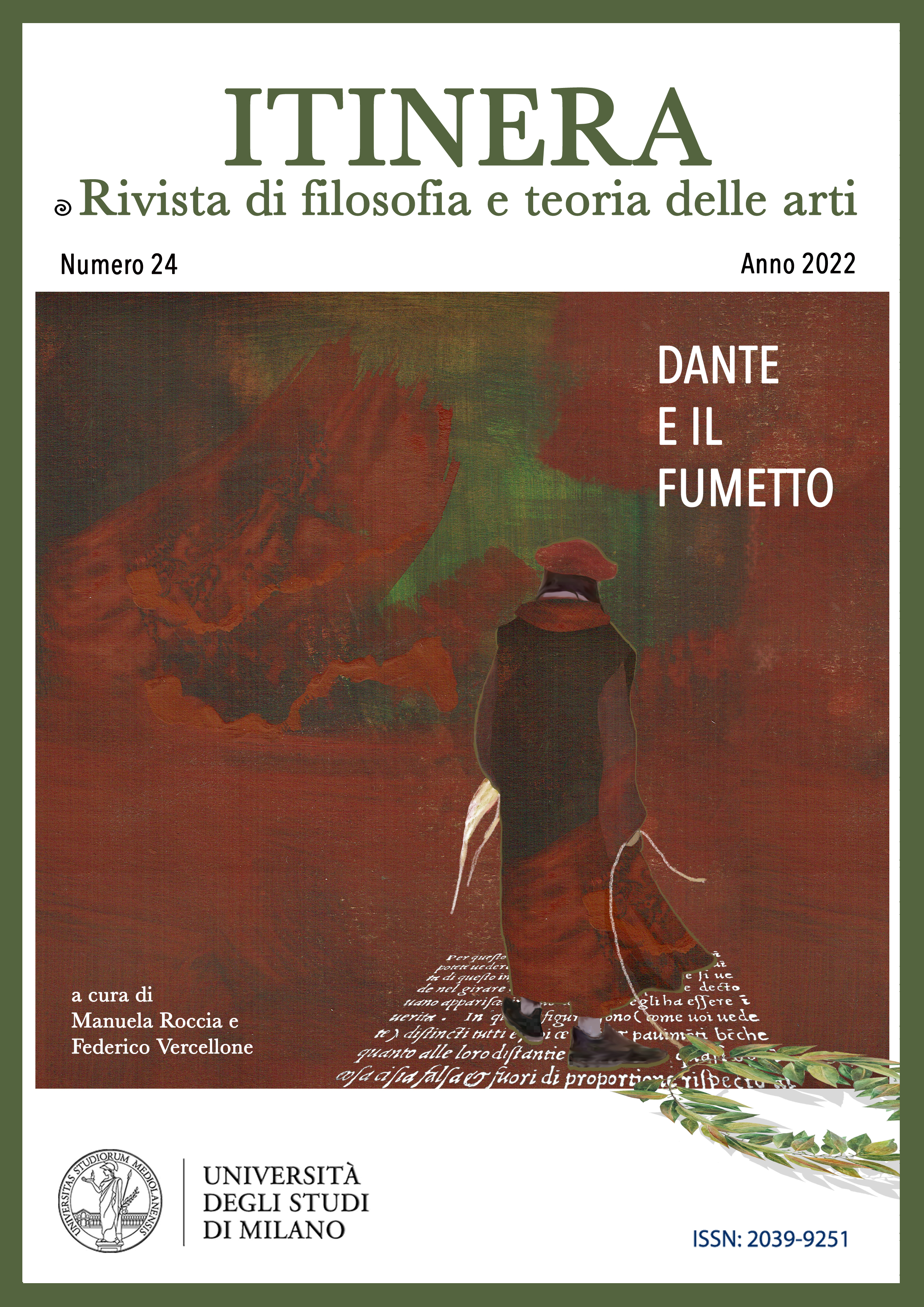La metafora considerata nei suoi molteplici usi
DOI:
https://doi.org/10.54103/2039-9251/19759Parole chiave:
analogy; imagination; metaphor; method of abstractionAbstract
Metaphor has often been seen as tightly associated with both aesthetics and cognition, as well as with other aesthetic and cognitive phenomena such as imagination, symbol, allegory, analogy and simile. This article offers a theory of metaphor that accounts for such aesthetic and cognitive associations. The theory is based on a suitably interpreted version of a tool originally developed in an epistemic context, viz. Floridi and Sanders’ method of abstraction.
Riferimenti bibliografici
Aristotele (1973), Opere, a cura di G. Giannantoni, Laterza.
Barsalou, L.W. (1992), “Frames, Concepts, and Conceptual Fields”, in A. Lehrer, E.F. Kittay (a cura di), Frames, Fields, and Contrasts: New Essays in Semantic and Lexical Organization, L. Erlbaum Associates.
Black, M. (1962), Models and Metaphors: Studies in Language and Philosophy, Cornell University Press.
Eliot, T.S. (2002), Collected Poems, 1909-1962, Faber.
Floridi, L., J.W. Sanders (2004), “Levellism and the Method of Abstraction”, IEG Research Report.
Glucksberg, S., B. Keysar (1993), “How Metaphors Work”, in A. Ortony (a cura di), Metaphor and Thought, Cambridge University Press.
Hesse, M.B. (1966), Models and Analogies in Science, Notre Dame University Press.
Kittay, E.F. (1987), Metaphor: Its Cognitive Force and Linguistic Structure, Clarendon Press.
Lakoff, G., M. Johnson (2003), Metaphors We Live By, 2a ed., University of Chicago Press.
van Noppen, J.P. (1983) (a cura di), Metaphor and Religion, Theolinguistics 2, Vrije Universiteit Brussel.
Ortony, A. (1993), “Similarity in Similes and Metaphors”, in A. Ortony (a cura di), Metaphor and Thought, Cambridge University Press.
Perelman, C., L. Olbrechts-Tyteca (1989), Trattato dell’argomentazione: la nuova retorica, Einaudi.
Platone (2019), Opere complete, Laterza.
Quintiliano, M.F. (1997), La formazione dell’oratore, trad. di S. Corsi, C.M. Calcante, Rizzoli.
Searle, J.R. (1978), “Atti linguistici indiretti”, in M. Sbisà (a cura di), Gli atti linguistici, Feltrinelli.
Turner, M. (1987), Death is the Mother of Beauty: Mind, Metaphor, Criticism, University of Chicago Press.
Vico, G. (1990), Opere, a cura di A. Battistini, Mondadori.
Way, E.C. (1994), Knowledge Representation and Metaphor, Studies in Cognitive Systems, vol. 7, Springer.
Dowloads
Pubblicato
Fascicolo
Sezione
Licenza
Gli autori che pubblicano su questa rivista accettano le seguenti condizioni:
1. Gli autori mantengono i diritti sulla loro opera e cedono alla rivista il diritto di prima pubblicazione dell'opera, contemporaneamente licenziata sotto una Licenza Creative Commons - Attribuzione - Condividi allo stesso modo 4.0 internazionale che permette ad altri di condividere l'opera indicando la paternità intellettuale e la prima pubblicazione su questa rivista.
2. Gli autori possono aderire ad altri accordi di licenza non esclusiva per la distribuzione della versione dell'opera pubblicata (es. depositarla in un archivio istituzionale o pubblicarla in una monografia), a patto di indicare che la prima pubblicazione è avvenuta su questa rivista.
3. Gli autori possono diffondere la loro opera online (es. in repository istituzionali o nel loro sito web) prima e durante il processo di submission, poiché può portare a scambi produttivi e aumentare le citazioni dell'opera pubblicata (Vedi The Effect of Open Access).





